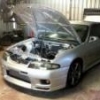Gtr Blowing Smoke - Help Troubleshoot
Announcements
-
Similar Content
-
Latest Posts
-
I'm not sure where you are, but United Terrey Hills has E85.
-
By Murray_Calavera · Posted
Do you mean not a limit to a certain power level? Surely if an injector is 100% open, there will be a limit to how much fuel can flow through it. -
Its a VR30DDTT, LPFP is Low pressure fuel tank (in pump) and HPFP is High pressure / mechanical fuel pump. Injector size doesn't seem to be a limit on that engine
-
By Murray_Calavera · Posted
So you want to run e30 on stock injectors and fuel pump?
-




Recommended Posts
Create an account or sign in to comment
You need to be a member in order to leave a comment
Create an account
Sign up for a new account in our community. It's easy!
Register a new accountSign in
Already have an account? Sign in here.
Sign In Now